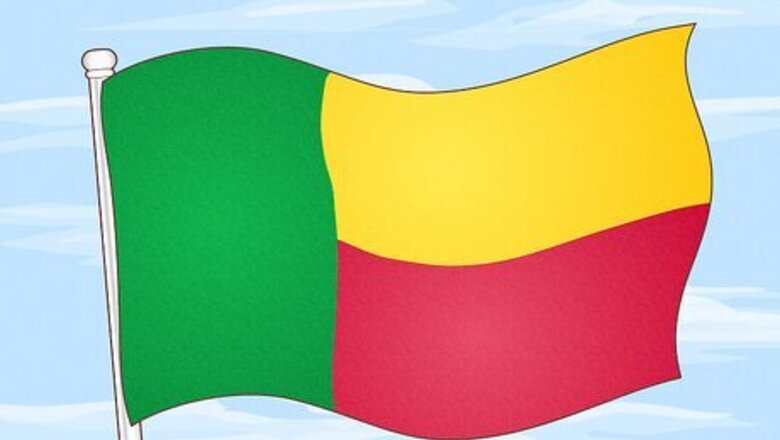
views
Red, Yellow, and Green Country Flags
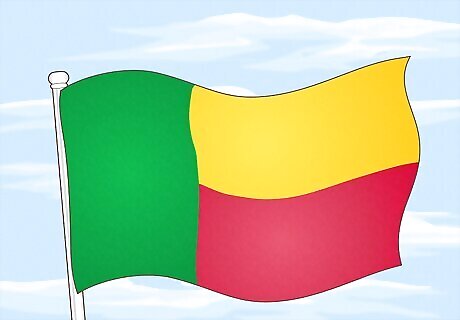
Benin The flag of Benin has a vertical green block on the left third of the flag. On the right of the flag, there’s a yellow block on top and a red block on the bottom. It was adopted in November 1960 and reinstated in 1998 after it was temporarily replaced in the 1970s as the result of a military coup. Symbolism: Yellow represents the savannas in northern Benin and the country’s mineral resources; green represents the palm groves in the south and the hope for renewal; red symbolizes the courage of the ancestors of Benin.
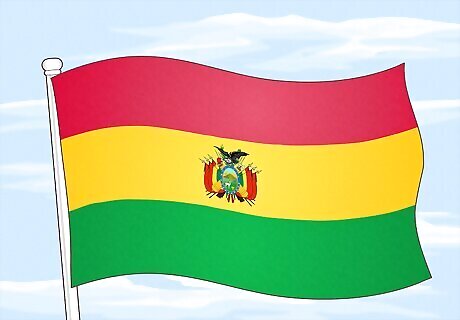
Bolivia The flag of Bolivia features horizontal red, yellow, and green stripes. In the center of the flag is Bolivia’s national coat of arms. This flag has been used since 1999, although an additional flag has been added to the coat of arms since its original debut. Symbolism: Red represents the valour of the Bolivian army; yellow symbolizes the country’s rich mineral resources; green represents the fertile land.
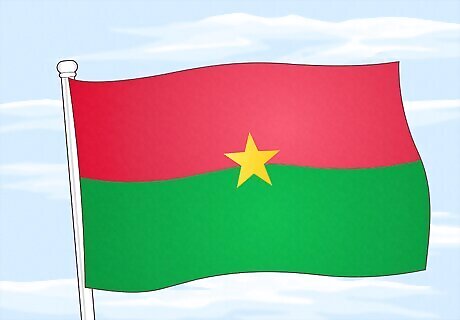
Burkina Faso The Burkinabé flag uses the Pan-African colors: the top half of the flag is red, the bottom half is green, and there’s a yellow star in the center. It’s been in use since the 1980s. Symbolism: Red represents the revolutionary struggle in Burkina Faso; green symbolizes hope and abundance; yellow stands for the country’s mineral wealth; the star symbolizes leadership.
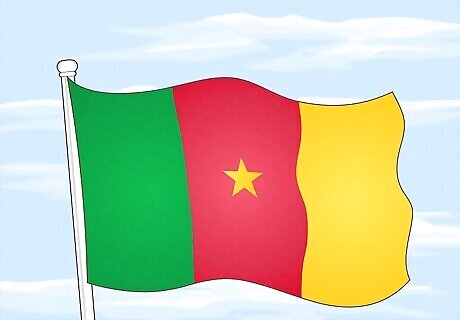
Cameroon The Cameroon flag has vertical green, red, and yellow stripes, with a yellow star in the center. The design was inspired by the French Tricolor flag, and the colors by the Pan-African flag. The current flag has been used since 1975. Symbolism: Green represents hope and the lush vegetation in the south of Cameroon; yellow symbolizes the northern savannas and the sun; red represents national sovereignty and unity.
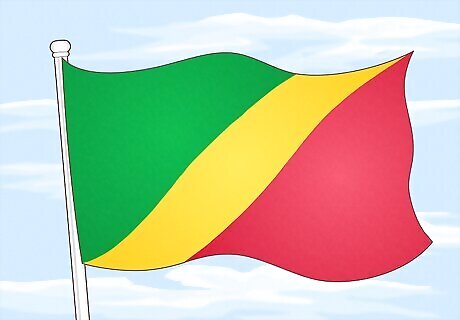
Republic of Congo The flag of the Republic of Congo has a green triangle on the left, a red triangle on the right, and a diagonal yellow stripe between the two triangles. It’s inspired by the Pan-African colors as well as the French Tricolor. It was originally introduced in 1959, and although it was replaced for a time by the country’s Marxist leadership, it returned in 1991 after the country once again obtained the right to free elections. Symbolism: Green represents agriculture and forests; yellow symbolizes friendship and nobility; red stands for the blood that was shed on the path to independence.
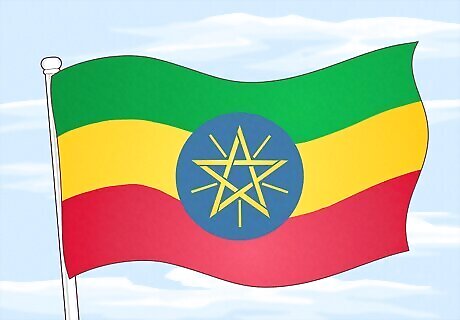
Ethiopia Ethiopia’s flag features horizontal green, yellow, and red stripes. In the center is a large blue circle with a yellow star with five rays. The flag was adopted in 1996 when the Federal Democratic Republic of Ethiopia formally ratified their constitution. Symbolism: Red symbolizes freedom and equality; green represents labor, development, and fertility; yellow stands for hope, justice and equality; blue represents peace; the star stands for unity; the star’s rays symbolize a bright future.
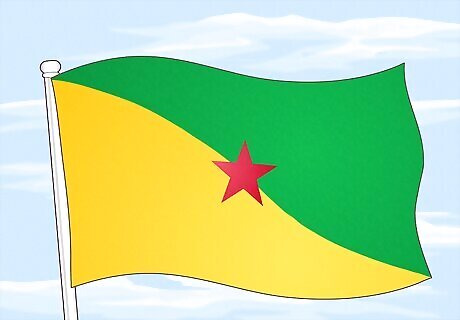
French Guiana (Unofficial) Officially, the flag of French Guiana is the French Tricolor. But the unofficial flag preferred by locals, which has been used since 1967, features a yellow triangle in the lower left and a green triangle in the upper right, with a red star in the middle. Symbolism: Yellow represents mineral wealth; green stands for the Amazon rainforest; the red star symbolizes socialism and the blood of local people.
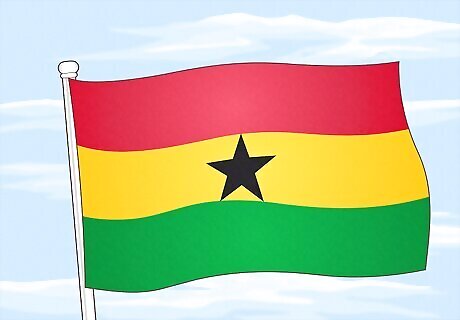
Ghana Like many other Pan-African nations, Ghana’s flag features horizontal stripes of red, yellow, and green. There’s a black star inside the center yellow stripe. This flag was flown from 1957 to 1962, then returned in 1966. Symbolism: Red stands for the blood of those who fought for independence; gold symbolizes Ghana’s mineral wealth; green represents rich forests; the black star symbolizes African emancipation.
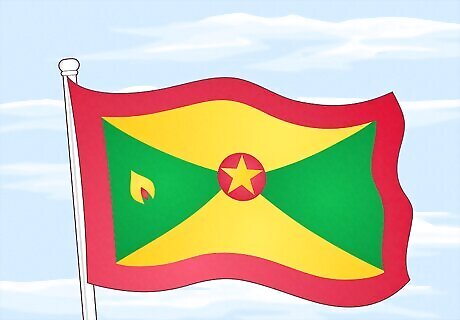
Grenada The Grenada flag has a red border with three yellow stars on top and three on the bottom. The field inside the border is divided diagonally into four triangles: green triangles on the left and right, and yellow triangles on the top and bottom. In the center of the triangles is a red circle with a yellow star. The left green triangle features a yellow and red nutmeg. This flag was adopted in 1974. Symbolism: The red border stands for harmony and unity; the 7 yellow stars represent Grenada’s original administrative regions; yellow represents wisdom and the sun; green represents vegetation; the nutmeg is one of Grenada’s chief exports.
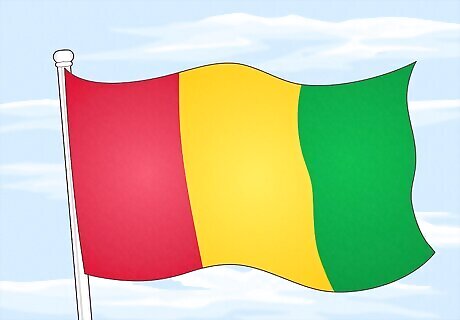
Guinea The flag of Guinea features a minimalist design that mimics the French Tricolor—three vertical stripes of red, yellow, and green. It was adopted in 1958 after Guinea became independent from France. Symbolism: Red symbolizes sacrifice and labor; yellow represents wealth, the sun, and justice; green stands for solidarity and agricultural wealth.
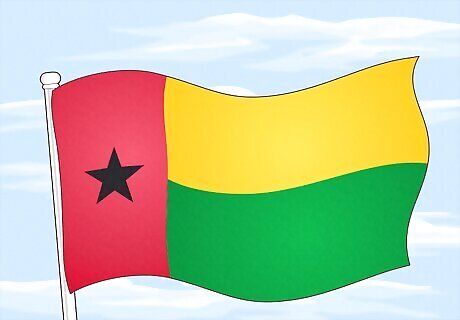
Guinea-Bissau The Guinea-Bissau flag has a vertical red stripe with a black star on the left side of the flag and vertical yellow and green stripes on the right side of the flag. It was adopted in 1961 and was inspired by the Pan-African colors. Symbolism: The red stripe and star represent Guinea-Bissau’s western coastal region and capital city; the yellow and green stripes stand for the country’s northern savannas and southern forests.
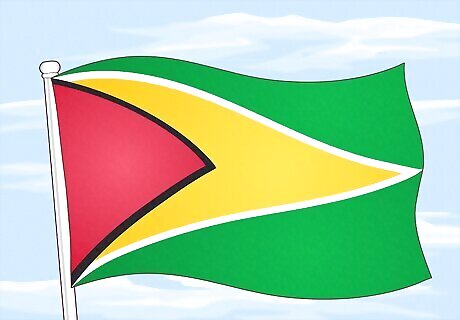
Guyana The flag of Guyana has a green field with a red triangle bordered in black on the right side, with a wider yellow pennant bordered in white extending beyond the red triangle. This flag, nicknamed the Golden Arrowhead, has been in use since 1966. Symbolism: Green stands for Guyana’s lush fields and jungles; yellow represents mineral wealth; red symbolizes the sacrifices on the path to independence; white stands for the country’s rivers; black represents perseverance.
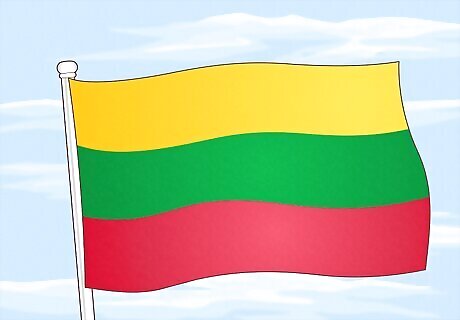
Lithuania The Lithuanian flag has a minimalist design featuring horizontal stripes of yellow, green, and red. This flag was first used in 1918 and became the official flag in 1922. It was temporarily replaced by a Soviet flag, but was re-established in 1988. Symbolism: Yellow stands for freedom from want and ripening wheat; red represents love of country, sovereignty, and courage; green symbolizes hope and Lithuania’s forests.
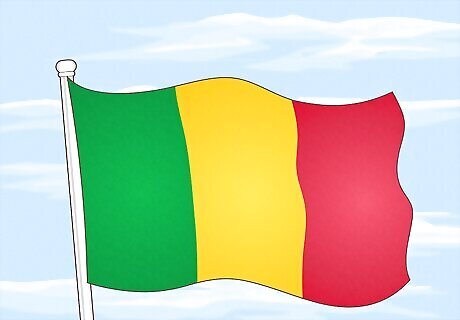
Mali The flag of Mali is a simple design with three vertical stripes of green, yellow, and red. The flag has been used since 1961 and was adopted after Senegal and Mali split into independent countries. Symbolism: The flag is inspired by the Pan-African colors used by the African Democratic Rally after World War II.
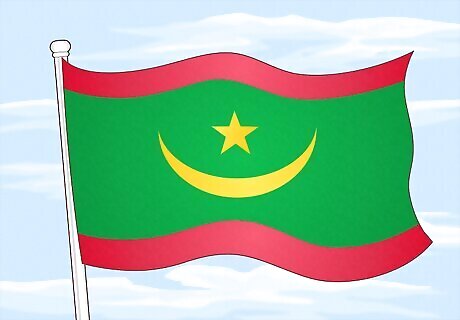
Mauritania The Mauritanian flag features red stripes on the top and bottom with a wider green stripe in the center. Within the green stripe are a yellow star above a crescent. This flag has been used since 2017, when the red stripes were added to the existing green flag with a yellow star and crescent. Symbolism: The green background and yellow star and crescent are Muslim symbols; yellow represents the sands of the Sahara; the red bands represent the country’s struggle for independence from French rule.
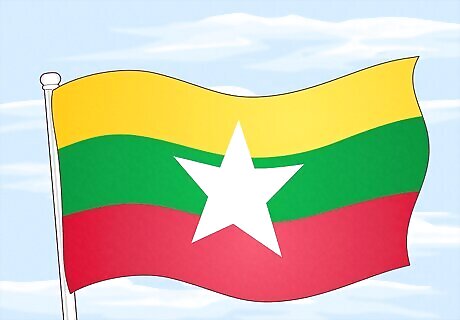
Myanmar Myanmar’s flag has three horizontal stripes of yellow, green, and red. A large white star sits in the center of the flag, overlapping all three stripes. This flag was introduced in 2010 after the ratification of a new constitution. The new flag used the same tricolor used in the 1940s. Symbolism: Yellow represents unity and happiness; green symbolizes fertility and peace; red represents bravery; white stands for purity, honesty, and compassion.
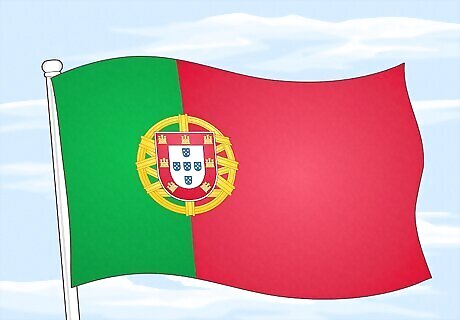
Portugal The flag of Portugal is green on the left third of the field and red on the remainder. On the division between the colors sit Portugal’s royal arms and the armillary sphere, a navigational tool. The arms originated in the 1100s and the sphere in the 1800s. This version of the flag has been used since 1911, when Portugal became a republic. Symbolism: Red stands for the blood spilled during the revolution that overthrew Portugal’s monarchy; green stands for hope for the future; the royal arms represent victory; the armillary sphere symbolizes Brazil.
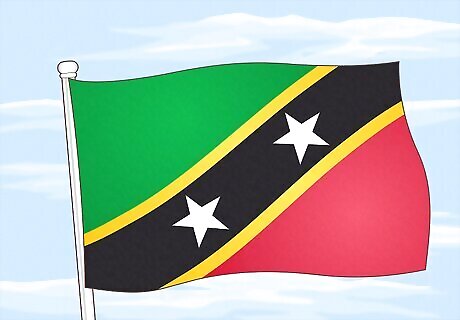
Saint Kitts and Nevis The flag of Saint Kitts and Nevis features a striking design with a green triangle in the upper left corner and a red triangle in the bottom right corner. Dividing the triangles is a thick black stripe bordered in yellow, with two white stripes inside the black stripe. This flag has been used since 1983. Symbolism: Green stands for the fertile vegetation of the islands; red represents the fight against slavery and colonialism; the black stripe stands for the country’s African heritage; yellow stands for the sun; the white stars represent the two islands, hope, and liberty.
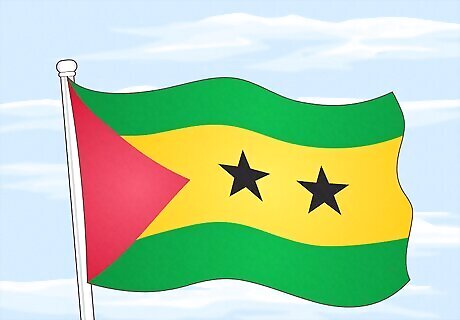
São Tomé and Príncipe The flag of São Tomé and Príncipe has a red triangle on the left side of the flag, with horizontal green, yellow, and green stripes making up most of the field. Inside the center yellow stripe are two black stars. This flag has been flown since 1975. Symbolism: Green stands for the country’s lush vegetation; yellow represents the sun and cocoa; the two stars stand for the two main islands of São Tomé and Príncipe.
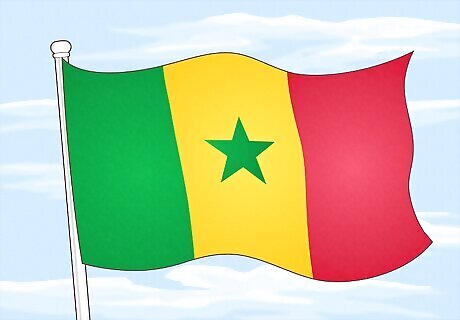
Senegal The Senegal flag features horizontal green, yellow, and red stripes, with a green star in the center yellow stripe. Its design was inspired by the French Tricolor. It was adopted in 1960 when Senegal became an independent country. Symbolism: Green represents hope and religion; yellow symbolizes wealth and natural riches; red stands for socialism and the struggle for independence.
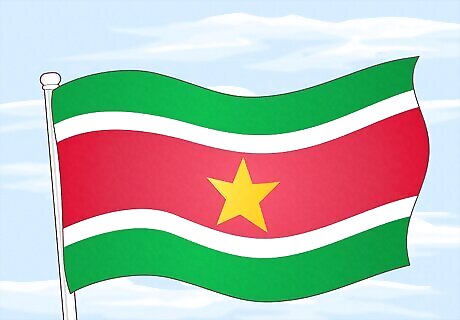
Suriname The Suriname flag has horizontal stripes in a green, white, red, white, green pattern. The middle red stripe has a large yellow star. The red stripe is the widest and the white stripes are narrowest. This flag has been flown since the country gained independence in 1975. Symbolism: Green symbolizes Suriname’s jungles and fields; white stands for freedom and justice; red represents a progressive spirit; the yellow star stands for the unity of the people and a bright future.
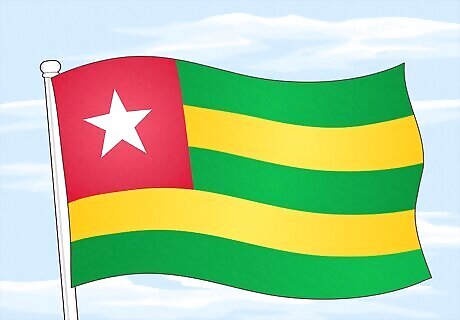
Togo The Togo flag has 5 horizontal green and yellow stripes (3 green and 2 yellow). There’s a red square in the top right corner, with a white star inside the square. This flag has been used since Togo gained independence from France in 1960. Symbolism: The five stripes represent the five administrative regions in Togo; green represents the people’s reliance on the land for sustenance; yellow represents labor and development; red stands for love, fidelity, and charity; white symbolizes purity.
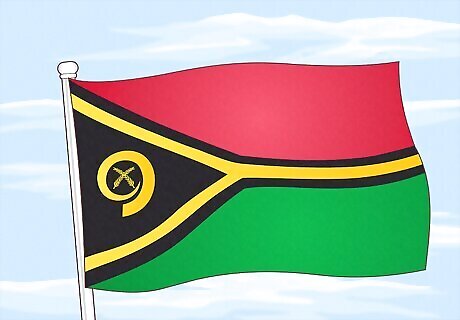
Vanuatu The flag or Vanuatu has horizontal red and green stripes and a horizontal yellow Y-shape (or pall). The pall is bordered in black. The triangle that fills the pall is black with a yellow symbol made up of two crossed leaves circled by the tusk of a pig. This flag has been used since 1980. Symbolism: Green represents the area’s lush vegetation; yellow represents peace and the light of Christianity; black symbolizes the rich soil of the islands as well as its inhabitants; the color red and the pig’s tusk represent the religious sacrifice of pigs that’s common on Vanuatu; the Y-shaped pall reflects the islands that make up Vanuatu.
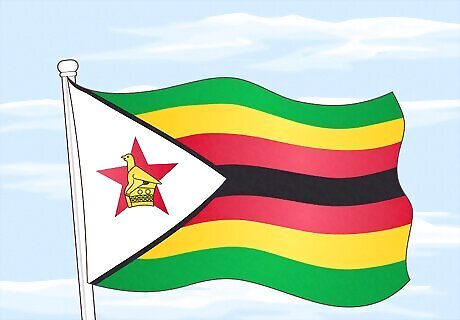
Zimbabwe The flag of Zimbabwe has a white triangle with a black border on the left side, with a green, yellow, red, black, red, yellow, and green striped pattern making up the remainder of the flag. Inside the white triangle is a red star and the Zimbabwe bird in yellow. This flag has been used since 1980. Symbolism: Black represents the ethnic majority of Zimbabwe; red symbolizes the blood shed during the fight for liberation; green represents agriculture; yellow stands for mineral wealth; white stands for peace and progress; the red star represents socialism; the Zimbabwe bird is an ancient symbol of the region.
Red, Yellow, and Green Warning Flags
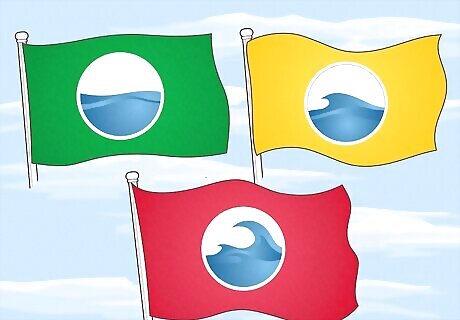
Red, yellow, and green flags are often used to indicate hazards. They’re commonly used on beaches to indicate whether the water is safe for swimming. A green flag signifies that the water is calm, so there’s a relatively low risk when getting in the water. A yellow flag indicates moderate surf or currents, so proceed with caution. A red flag represents strong currents or high surf that makes the water unsafe, and a double red flag means the water is closed to the public. These flag colors are also used metaphorically. For instance, a red flag in a relationship means a behavior that you notice that may indicate a person is abusive, toxic, or simply not right for you. Conversely, a green flag in a relationship is a healthy or desirable behavior that makes you feel safe or comfortable, like surprising you with your favorite soup when you’re sick or being nice to strangers. A yellow flag in a relationship might be something that makes you a little cautious, but isn’t necessarily a deal breaker—like you notice they get a little snappy when they’re tired when they’re usually very patient.
Other Flag Color Combinations
Want to explore more flag colors? Check out our series of flag color articles to learn where different flags come from, plus each one’s unique symbolism. Get started here: Red, Yellow, and Blue Flags Red, White, and Blue Flags Red, Black, and Green Flags Red, White, and Green Flags Black, Red, and Yellow Flags Green, Yellow, and Black Flags Green, White, and Orange Flags Blue and Yellow Flags Blue and White Flags Black and White Flags










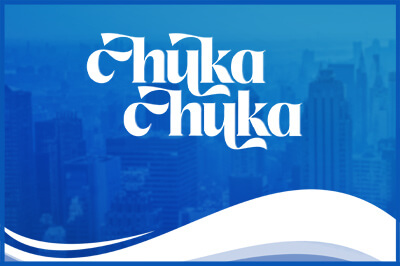




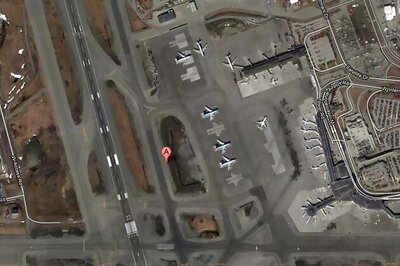
Comments
0 comment